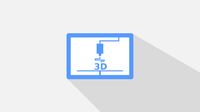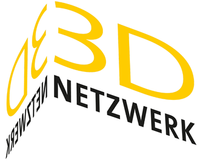BLOG: Role of 3D Printing in Product development
In a highly competitive consumer market, it is essential to be able to adapt to the market changes, quickly turn the ideas into product, and be capable to develop products and reach the markets faster. 3D printing in the product development process accelerate. Some of the most important benefits of using 3D printing in product development process:
Time Savings: Prototyping using 3D printing helps to refine and develop the product concepts faster. Outsourcing the new prototypes can result in longer lead times and relying on the suppliers can delay the process. In-house design, and in-house prototyping using 3D printing significantly reduces the time required to turn ideas into products. Furthermore, the time saved in prototyping phase allows businesses to produce the product and reach the market quicker. Even though 3D printing has its limitations for manufacturing large batch sizes, but the prototypes can be fabricated in-house in very less time compared to conventional techniques.
Reduced Costs: Product design is an iterative process, and with every design change the associated prototyping costs increases. Furthermore, outsourcing the prototypes can take days and adds to the costs. Using 3D printing enables multiple iterations of the product design and more design freedom. The prototypes can be fabricated, and the designs can be verified and then refined accordingly. Companies can save time and costs with in-house prototyping using 3D printing.
Tangible Products for Visualization: 3D printed prototypes prove to be very helpful in creating and presenting new product ideas to potential investors, customers, colleagues etc. It becomes way easier to convey a product idea using a tangible product rather than visualizing on the basis of drawings, and digital models.
Risk Reduction: During the development phase, with 3D printing, the designers and engineers get a real-life version to study, test and optimize. The prototype or end user part can be verified for the form, fit, functionality, machinability of the product in an affordable and significantly faster way as compared to conventional techniques. This ensures that the design is ready for series production and reduces the risks related to expensive production tool investments. Furthermore, in-house prototyping reduces the risk of intellectual property violation.
Weiterführende Links:




